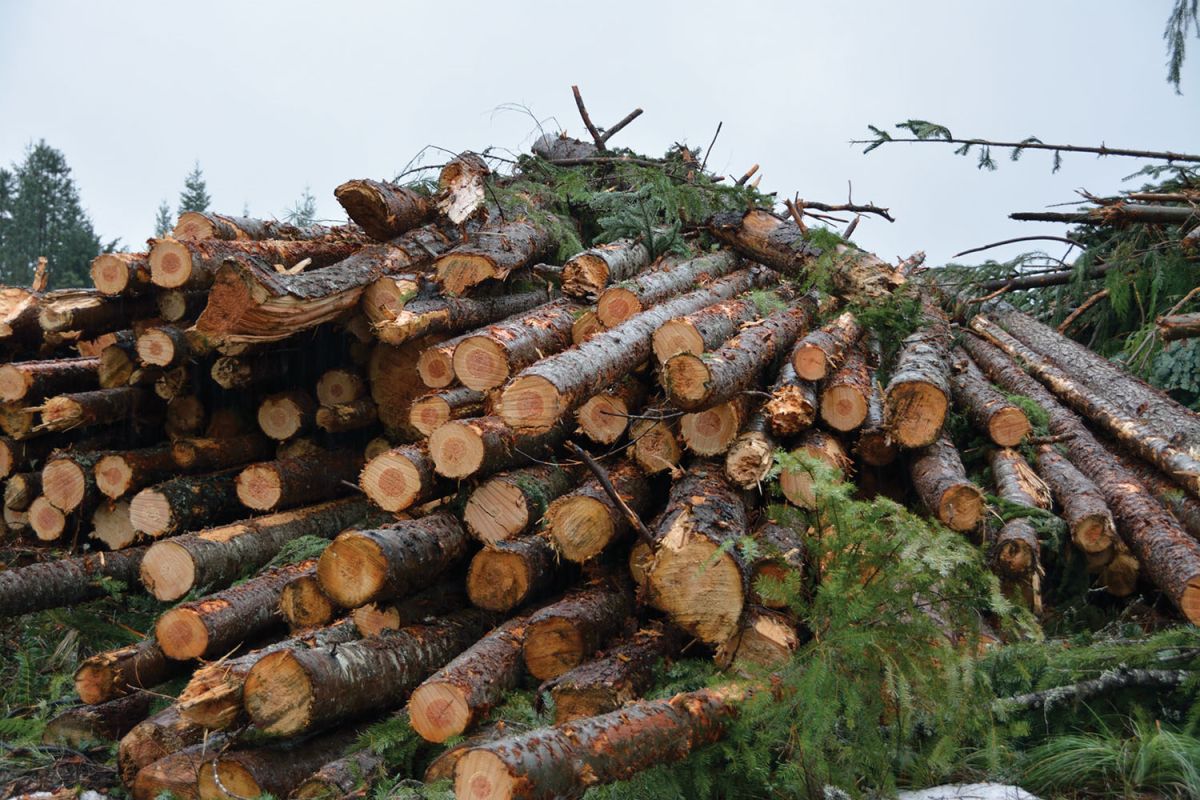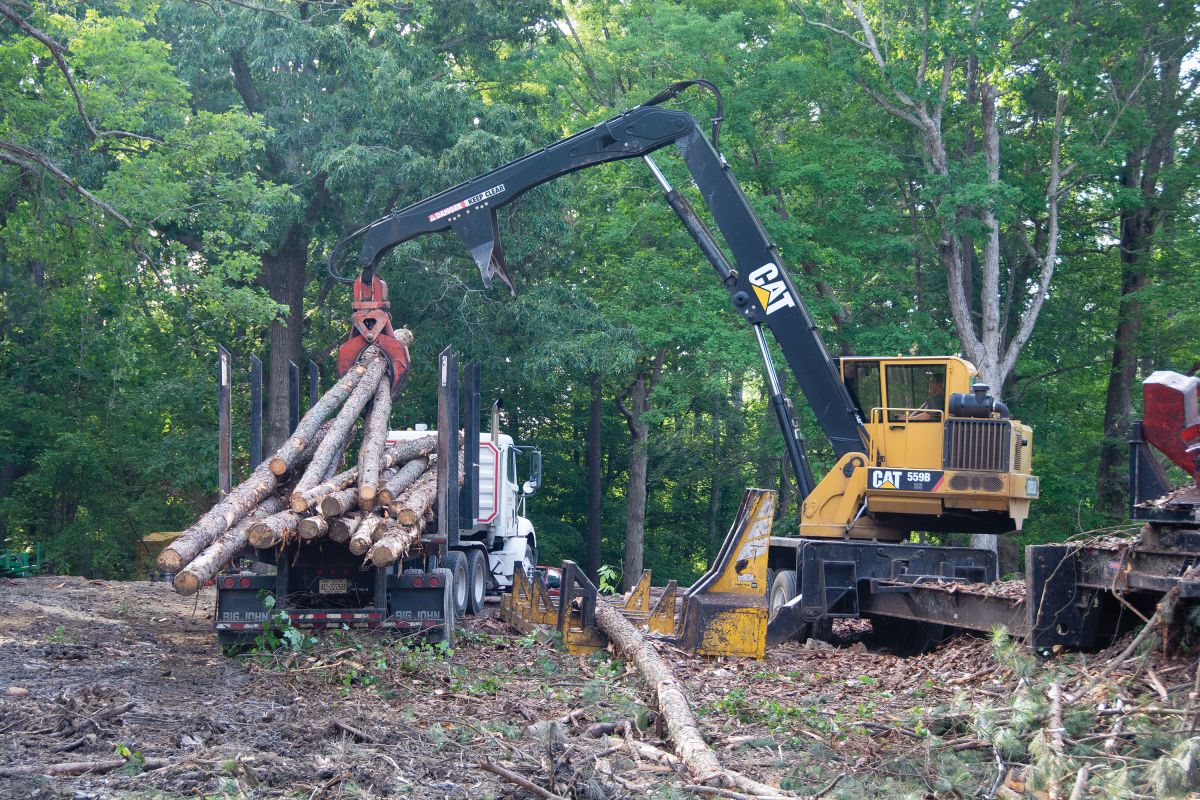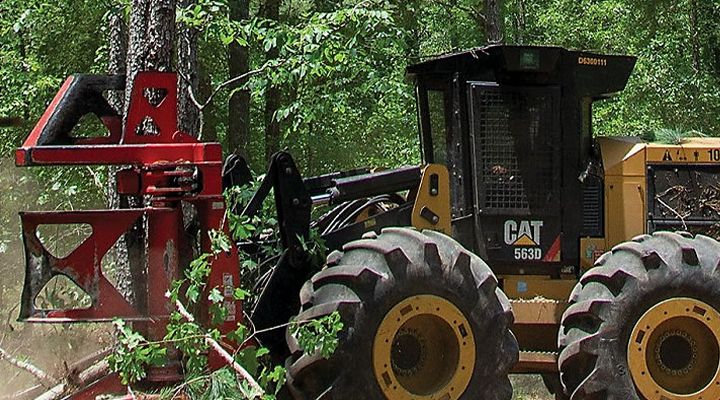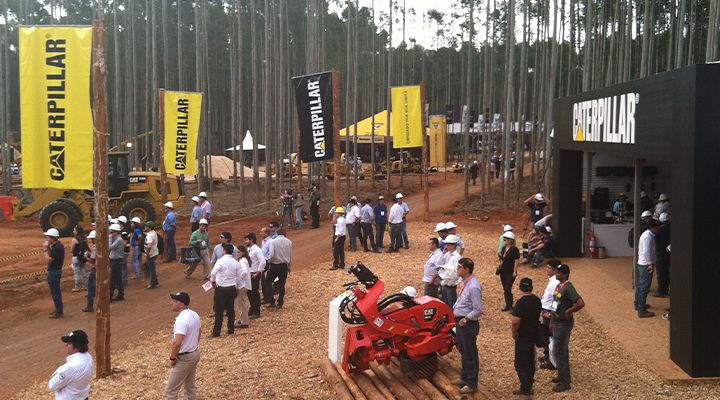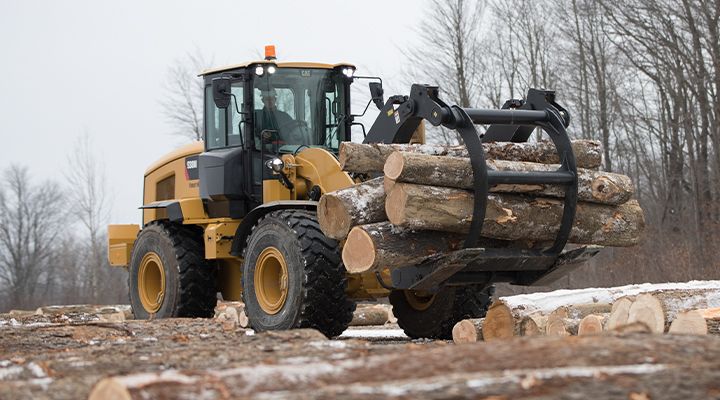If you already have an existing account with another Cat App, you can use the same account to sign in here.
One Account. All of Cat.
Your Caterpillar account is the single account you use to log in to select services and applications we offer. Shop for parts and machines online, manage your fleet, go mobile, and more.
Account Information
Site Settings
Security
Consistency Helps Logger Achieve Success
On land where his grandfather harvested tobacco decades earlier, Jimmy Williams worked a feller buncher to select cut a mix of pine and hardwoods on 71 acres now owned by the Army Corps of Engineers near Jordan Lake in Chatham County, North Carolina.
At another jobsite, not far away, logging equipment was being set up for J.M. Williams Timber Company’s next job. To keep his crew working consistently, Williams typically sets up equipment at two jobsites simultaneously. That way, when work is completed at a job his crew can move to a new site without losing a day’s work.
“It’s all about consistency,” Williams says. “I have two of everything, so I can have my equipment set up on two jobs.”
Mill quotas generally limit the amount of wood that he can haul each week. Consequently, Williams is more concerned with keeping the wood flowing, rather than producing as much as possible and then breaking the flow to move equipment to the next site. “If you don’t get your logs moved this week, they are gone forever. The mill will buy them from someone else,” Williams says. “My key is to stay consistent.”
Mill quotas generally limit the amount of wood that he can haul each week. Consequently, Williams is more concerned with keeping the wood flowing, rather than producing as much as possible and then breaking the flow to move equipment to the next site. “If you don’t get your logs moved this week, they are gone forever. The mill will buy them from someone else,” Williams says. “My key is to stay consistent.”
His crew consistently produces 30 to 40 loads (30 tons each) per week. “We can do 50 loads a week, but it doesn’t happen but a few times a year,” Williams says. “People think the number of loads is going to do it, but it doesn’t. It’s part of the puzzle, but mills don’t let you do whatever you want.”
Williams runs Cat® machines almost exclusively. His Cat fleet includes: a 535D Skidder, 535C Skidder, 563C Feller Buncher, 559B Knuckleboom Loader, and a 559C Knuckleboom Loader.
22-Year Tradition
An 18-year-old 527 Track Skidder with a six-way blade is used for construction of roads and landings and clean-up work. The tracked machine drags out of the woods when mud makes sites inaccessible to other machines. “The ground pressure is four pounds per square inch. That’s less than a 200-pound man with a size 12 boot,” Williams says.
“We’ve been running Cat dozers for 22 years. When they expanded into knuckleboom loaders and forestry machines, we purchased them, too. It was a no-brainer,” Williams says. “The Cat machines are reliable, and versatile. The filters fit multiple machines. That simplifies things.”
Williams works primarily in North Carolina’s Piedmont Region, generally no more than 50 miles from company headquarters in Apex.
Cat machines meet the challenge of working in the region's soil conditions that range from clay to thick top soil. The 563C Feller Buncher runs on 44-inch tires to work in soft soil. “Some guys run dual tires, but I do select harvest so I can’t be 14-feet wide. I have to stay narrow,” Williams says.
Cat dealer, Gregory Poole Cat, does an excellent job of providing service and parts to help keep fleet uptime high. “The beauty of it, they are never more than 40 miles away from my jobsites,” Williams says. “Their store in Raleigh stays open until ten o’clock at night. You can’t beat that.”
Parts are also supplied via drop boxes, and sales people bringing parts directly to the jobsite. “Customer support is top-notch,” Williams states.
J.M. Williams Timber Company was founded in 1995 by Williams and his late father, James Williams, Sr. His grandfather ran a portable sawmill as a side business to the family's main work of tobacco farming. As tobacco farming waned, his dad suggested starting a logging crew when Jimmy graduated from high school. “That’s exactly what we did,” Jimmy Williams says. “We mainly wanted to do select cuts. That’s what we specialize in today.”
At land owned by the Army Corp of Engineers and managed by the North Carolina Game Land Commission, the crew select harvested 71 acres, as well as clear-cutting 25 acres. The tree harvest helps improve wildlife habitat. “They want the trees far enough apart that the sun can touch the soil and have greenery come up,” Williams says. “We don’t harvest anything that produces a nut, no hickory or white oak. We try to cut out all the soft hardwood because it is so invasive. The sweet gums will take over.”
The work is on a contract with a mill, as is 90 percent of Williams’ business. “I might do ten percent for people that want to work directly with me,” Williams says.
Fully Loaded
With his emphasis on consistency, Williams has implemented onboard scales to ensure that trailers are fully loaded. Also, Williams purchased lightweight trailers, so more logs can be carried per load. The company has moved from trailers weighing as much as 13,000 pounds to 9,500-pound trailers “If I can only haul so many loads per week, I figured that I better get every ton that I can on each load,” Williams says. “They paid for themselves within a year.”
Trucks are lighter, by as much as 6,000 pounds compared to those he ran previously. “I can’t make it up on volume, so I try to make every load count,” Williams notes.
Hard work is another major tenet of Williams, including a memorable Thanksgiving Day with his dad. “There was a big rain coming and we were going through a guy’s yard. We would have lost a week, or totally destroyed this person’s yard, if we hadn’t worked that day. Daddy said, ‘We can eat turkey tomorrow.’”
“We always put work first,” Williams says, but adds that he is learning to take some weekends off from the job. “If you let it, the logging business will take every single moment of your life. It’s a dance, a balance that you have to learn.”
And the legacy of harvesting the bounty of the Piedmont Region, handed down from father to son for three generations, continues.
The New South
North Carolina’s Research Triangle Park has helped fuel unprecedented development and brought tens of thousands of jobs to the Raleigh/Durham/Chapel Hill area. “Companies like IBM were bringing in people from other states to work here. That started the first housing developments that we had ever heard of,” Jimmy Williams, owner of J.M Williams Timber Company, Apex, North Carolina, recalls.
Following World War II, North Carolina's economy could no longer depend upon the traditional industries of agriculture, textiles, and furniture. Academics at North Carolina State and Duke came up with the idea of creating the park so that the universities could do research together, leverage the area’s strengths, and keep graduates in state, according to Wikipedia. The idea was hugely successful, and transformed the region.
The timber industry has been transformed, as well. In addition to select cuts, Williams now clear-cuts for housing developments. “There’s still a lot of timber here. This is a strong market,” Williams says.


RELATED ARTICLES
You’re here to get ideas to grow your business. Read on for machine insights and expert tips and tricks to get more out of every job.
-
Fleet Meets Forestry Challenge of Six-Day Work Week
Two decades of running Cat® forestry equipment.
Learn More -
North Carolina Logger Wins Loader Championship Sponsored by Cat Forest Products at Richmond Expo
East Coast Logging and Equipment Exposition, Richmond, Virginia, May 18-19, 2018. Loader Championship Sponsored by Caterpillar Forest Products.
Learn More -
Solutions for Brazil's Rapidly Growing Forestry Industry on Display at ExpoForest
Customers in the Brazilian forestry industry purchase nearly 2,000 machines a year—making Expoforest Brazil 2014 the place to be for Caterpillar and its local dealers.
Learn More -
Want More On The Bottom Line? Start Timing Tasks
Find out how to get a handle on the efficiency of your operation by timing tasks and get tips to improve machine cycle times.
Learn More



